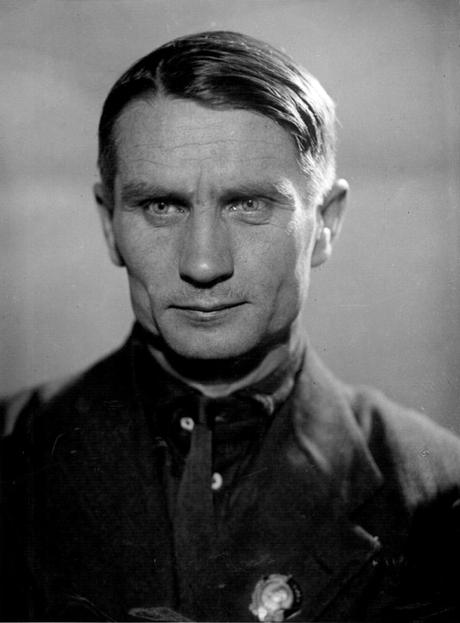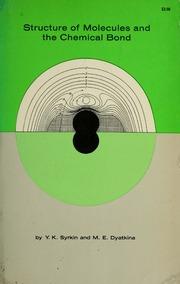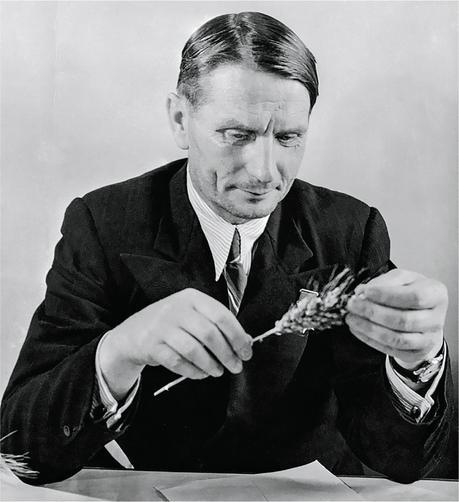 Trofim Lysenko
Trofim Lysenko[Part 3 of 7]
Linus Pauling’s resonance theory, while initially a bit difficult to grasp, gradually became an essential tool for predicting and understanding chemical structures. Widely lauded for the links that it provided between classical chemistry and the new quantum mechanics, the theory was also valued for its practical applications in molecular modeling.
But not all found comfort and solace in resonance. In particular, many Soviets viewed Pauling’s theory as an affront to their ideology, regardless of its chemical “correctness.” For these critics, an abstract hybrid model of the molecule – one lacking a foundation in a quantifiable reality – was too troublesome to ignore.
Pauling developed his theory of resonance in a series of papers authored in the early 1930s, and eventually codified the work in his 1939 book, The Nature of the Chemical Bond. Soviet scientists were surely aware of resonance theory throughout this time period, but it appears that ideological interest in Pauling’s ideas did not fully manifest until after World War II. This was likely because, during the war, the Soviet government diverted scientific work away from theoretical investigations in favor of practical applications that would benefit the war effort. Shortly after Word War II ended however, Soviet scientists Ia. K. Syrkin and M.E. Diatkina translated The Nature of the Chemical Bond into Russian. The tandem then wrote their own book outlining ideas on structural chemistry; a book that was based on resonance theory.

Though they had grounded their text in well-established chemical theory, Syrkin and Diatkina’s work was almost immediately criticized within the Soviet Union. In 1949, Soviet scientists V.M. Tatevskii and M.I. Shakhparanov published an article in the journal Voprosyi Filosofii (Questions in Philosophy) titled, “About a Machistic Theory in Chemistry and its Propagandists.” In it, the authors contended that Syrkin and Diatkina were obliged to carefully critique Pauling’s resonance theory, rather than bestow upon it “laudatory” praise. The paper then points out that Syrkin and Diatkina did not include
even one mention of the works of Russian or Soviet scientists…it was expected that the translator and editor, fighting for the honor of the Soviet science, would have seen to it to fill in this gap.
“Still worse,” the authors continued, “the annotations which Syrkin gives at the end of the book are represented primarily as indication of the works of American and English chemists.” This given, one could only conclude that Syrkin and Diatkina were merely “propagandists for the known-to-be erroneous and vicious theory of the American chemist, Pauling.”
Tatevskii and Shakhparanov’s views were not anomalous. In fact, the Soviet Academy of Sciences itself viewed Syrkin and Diatkina as being in “serious error” for “championing the theory of resonance or failing to expose its supposed fallacy.” The rhetoric only escalated from there, and in 1951 Syrkin and Diatkina were forced to recant their belief in resonance theory. In his recantation, Syrkin was famously quoted as saying that he had “overestimated second rate works of foreign scientists.”

On the surface, the criticism of Syrkin and Diatkina seems to have emerged primarily from their support of a non-Soviet scientist. And while this was certainly a factor, the attack was also a product of a larger ideological push within Soviet science that traced its origins to the 1930s and a man named Trofim Lysenko.
An agronomist, Lysenko came to symbolize the ideal Soviet man; a notion that received the full support of Premier Joseph Stalin. Lysenko had been born into relative poverty but eventually gained entry into the Kiev Agricultural Institute, where he studied wheat production. It was there that he began to develop the ideas for which he would become well known.
Lysenko believed that if he could freeze winter wheat, he would be able to force early germination of the crop, a process known as vernalization. He also believed that this early germination would in turn become a heritable characteristic. A breakthrough of this sort was highly desirable in the Soviet Union, in part because the vast nation had experienced multiple food shortages due to unseasonably cold winters and poorly structured collectivist agricultural practices. In Lysenko, Stalin saw the promise of more easily feeding the Soviet population, and the scientist quickly grew in stature as a “man of the people.”
But Lysenko’s ideas were attractive on ideological grounds as well, chiefly because his ideas on vernalization took a Lamarckian approach to evolution. Simply put, Lysenko believed that evolution was something that could be controlled by man; that the people had the means and ability to enact and propel genetic change.
This idea ran counter to those prevailing in other parts of the world and specifically the United States, where a more Darwinian notion of evolution had been adopted. In the Darwinian model, evolutionary change occurs by random chance and individuals do not possess the ability to create lasting heritable impact through their own actions. For the Soviets, the Darwinian model was seen as bourgeois, a word that was widely held in contempt. In contrast, Lysenko’s view of evolution was one that put the state in control, and it was absolute.
Given this context, it becomes easier to see how resonance could be viewed as being counter to Soviet ideology. And within the USSR, an alternative theory was accordingly developed by a Soviet chemist named Gennadi Chelintsev, who aspired to become the chemistry and biology equivalent of Lysenko.
Chelintsev applied Soviet ideology to chemistry in his book, Essays on the Theory of Organic Chemistry. Importantly, Chelintsev used the book to argue that every molecular compound had only one discrete structure. His ideas were appealing to many Soviet scientists because, as with Lysenko, they were primarily based in the mechanistic world view that was so deeply enmeshed in Soviet ideologies.
By translating The Nature of the Chemical Bond, Syrkin and Diatkina had brought Pauling’s ideas on resonance to the widespread attention of Soviet chemists, a process that allowed many to become aware of a scientific concept that was contrary Soviet ideology. In reaction, Chelintsev and others found in Pauling’s theory a perfect tool for villainizing non-Soviet science. And while Chelintsev’s book did not target Pauling outright, it did bring attention to a conflict that would continue to grow in the years to come.
